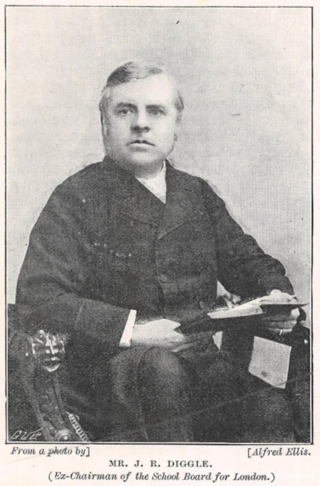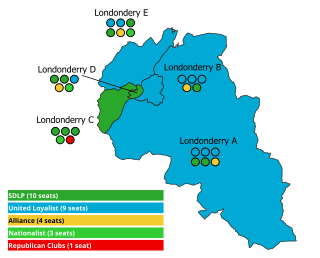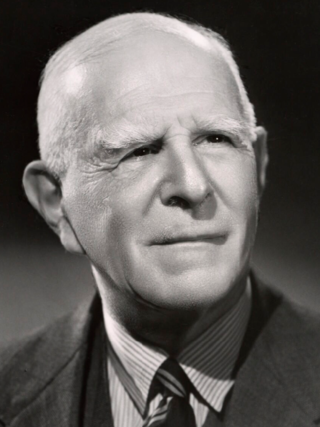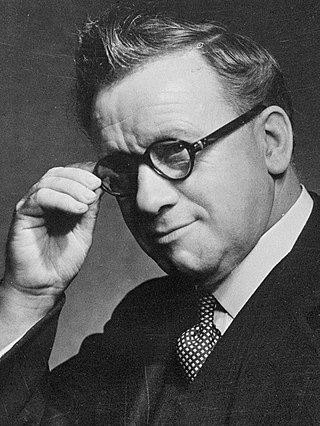 | |||||||||||||||||||
| |||||||||||||||||||
| |||||||||||||||||||
An election to the County Council of London took place on 3 March 1898. The council was elected by First Past the Post with each elector having two votes in the two-member seats. The Progressive Party won a substantial majority on the council.
 | |||||||||||||||||||
| |||||||||||||||||||
| |||||||||||||||||||
An election to the County Council of London took place on 3 March 1898. The council was elected by First Past the Post with each elector having two votes in the two-member seats. The Progressive Party won a substantial majority on the council.
The Progressives contended that, because the last election had resulted in a tie in the number of councillors, the council had made little progress over the past three years. They argued that they had successfully led slum clearance programmes. They proposed that the council should maintain its existing policy of refusing to sell alcohol in premises it owned, should seek to levy increased taxes on landlords, and should aim to municipalise the gas and water supplies. [1]
The Moderates argued that the Progressives were fighting on party political lines, and that as a result, they would too. They contended that the Progressives wanted to adopt socialist policies, and that they had wasted money by overspending on building projects. Instead, the Moderates advocated passing the majority of the council's responsibilities to the Metropolitan Borough Councils. [2]
The election in Hackney Central was delayed, due to the death of one of the candidates. [3]
The Progressive Party gained 16 seats from the Moderates and lost only 4 seats to them, winning a substantial majority. [4] The Times noted that this was less than their majority in the 1892 London County Council election, and did not necessarily mean that the voters of London would support the Liberal Party at the next UK general election. [5]
| Party | Votes [6] | Seats | ||||||
|---|---|---|---|---|---|---|---|---|
| Number | % | Stood | Seats [4] | % | ||||
| Progressive | 150,826 | 49.2 | 112 | 70 | ||||
| Moderate | 148,576 | 48.4 | 114 | 48 | ||||
| Independent | 4,681 | 0.8 | 5 | 0 | ||||
| Independent Labour | 4 | 0 | ||||||
| Ind. Labour Party | 3 | 0 | ||||||
| Social Democratic Federation | 2 | 0 | ||||||
The National Labour Organisation, also known simply as National Labour, was formed in 1931 by supporters of the National Government in Britain who had come from the Labour Party. Its leaders were Ramsay MacDonald (1931–1937) and his son Malcolm MacDonald (1937–1945).
The Municipal Reform Party was a local party allied to the parliamentary Conservative Party in the County of London. The party contested elections to both the London County Council and metropolitan borough councils of the county from 1906 to 1945.

The Reverend Joseph Robert Diggle JP was a British Anglican clergyman, politician and public servant. He is notable for his campaign to change the law to allow clergymen to take seats in the House of Commons, and for his chairmanship of the London School Board. His combative approach to political debate was the key to his career, helping him to run the Board for nine years but denying him any higher office.
An election to the County Council of London took place on 5 March 1892. The council was elected by First Past the Post with each elector having two votes in the two-member seats. The Progressive Party retained control of the council, gaining seats from the Moderates.
An election to the County Council of London took place on 5 March 1904. The council was elected by First Past the Post with each elector having two votes in the two-member seats. The Progressive Party retained control of the council, with a slightly reduced majority.
An election to the County Council of London took place on 2 March 1907. The council was elected by First Past the Post with each elector having two votes in the two-member seats. For the first time, the Progressive Party lost control of the council, being defeated by the recently formed Municipal Reform Party.
An election to the County Council of London took place on 5 March 1910. It was the eighth triennial election of the whole Council. The size of the council was 118 councillors and 19 aldermen. The councillors were elected for electoral divisions corresponding to the parliamentary constituencies that had been created by the Representation of the People Act 1884. There were 57 dual member constituencies and one four member constituency. The council was elected by First Past the Post with each elector having two votes in the dual member seats.
An election to the County Council of London took place on 6 March 1919. It was the tenth triennial election of the whole Council. The size of the council was increased to 124 councillors and 20 aldermen. The councillors were elected for electoral divisions corresponding to the new parliamentary constituencies that had been created by the Representation of the People Act 1918. There were 60 dual-member constituencies and one four-member constituency. The council was elected by First Past the Post, with each elector having two votes in the dual-member seats.

An election to the County Council of London took place on 2 March 1922. It was the eleventh triennial election of the whole council. There were sixty dual member constituencies and one four member constituency, making a total of 124 seats. The council was elected by First Past the Post with each elector having two votes in the dual member seats.
An election to the County Council of London took place on 5 March 1925. The council was elected by First Past the Post with each elector having two votes in the two-member seats. The Municipal Reform Party retained a large majority, while the Labour Party established itself as the principal opposition, supplanting the Progressive Party.

The 1908 Peckham by-election was a parliamentary by-election held for the British House of Commons constituency of Peckham in the Metropolitan Borough of Camberwell, London on 24 March 1908. The seat was won by the opposition Conservative Party candidate, a gain from the Liberal Party who had won a large majority at the 1906 general election.

The 1973 Londonderry City Council election took place on 30 May 1973 to elect members of Londonderry City Council in Northern Ireland. This was on the same day as other Northern Irish local elections. The campaign was significant in that, following changes to the election process and districts, Irish nationalist parties were able to take control of the council for the first time.
An election to the County Council of London took place on 3 April 1952. The council was elected by First Past the Post with each elector having three votes in the three-member seats. The Labour Party made substantial gains and greatly increased its majority.

An election to the County Council of London took place on 7 April 1949. The council was elected by First Past the Post with each elector having three votes in the three-member seats. The Conservative Party made substantial gains, achieving the same number of seats as the Labour Party. However, Labour held the chair of the council, and was thus able to retain control.

An election to the County Council of London took place on 7 March 1946. The council was elected by First Past the Post with each elector having two votes in the two-member seats. The Labour Party once more made gains, again increasing their majority over the Conservative Party.

An election to the County Council of London took place on 4 March 1937. The council was elected by First Past the Post with each elector having two votes in the two-member seats. The Labour Party made gains, increasing their majority over the Municipal Reform Party.

An election to the County Council of London took place on 5 March 1931. The council was elected by First Past the Post with each elector having two votes in the two-member seats. The Municipal Reform Party slightly increased its majority on the council, with overall results matching those from 1925.

An election to the County Council of London took place on 8 March 1928. The council was elected by First Past the Post with each elector having two votes in the two-member seats. The Labour Party made slight gains at the expense of the Municipal Reform Party, which nonetheless retained a substantial majority.
The first election to the County Council of London took place on 17 January 1889. The council was elected by First Past the Post with each elector having two votes in the two-member seats. Although the election was not contested on a party political basis, soon after the election, the majority of councillors formed the Progressive Party.
An election to the County Council of London took place on 2 March 1895. The council was elected by First Past the Post with each elector having two votes in the two-member seats. The Moderates made numerous gains, and tied the Progressive Party in seats on the council.